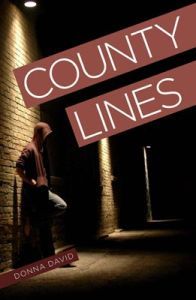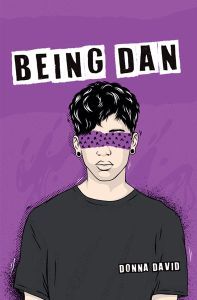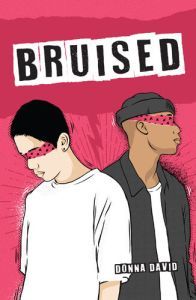Donna David
Donna David is a former milkman's assistant, sports coach, ketchup packer and fairground operative. She lives with her husband and three children in Hampshire but, as part of a military family, they have lived all over the UK.
Now retired from the worlds of milk and ketchup, when Donna's not writing, she works as an English Coach in the local secondary school.
Donna loves to read, run and play netball. Not all at once though. Not after last time.
Donna has currently written one title for Badger Learning, Bruised from their Two Sides series — six captivating stories which contain two parallel narratives offering differing perspectives on the same situation.
Q&A with Donna David
What inspired you to write for reluctant readers?
The students that I work with inspire me to write for them every day. Students often tell me that they don't like reading and I always answer that maybe they've not yet found the right book for them. The feeling I get when we share a book that they think is 'OK' or 'Alright actually' is incredible.
What challenges do struggling readers face when they open a book?
Sometimes getting a struggling reader to even open a book is the biggest challenge of all. I often spend my time with students reading to them. Not everyone likes reading, but I've yet to meet someone who doesn't like a good story. If you can hook a struggling reader into a story then they're motivated to read on themselves.
What is your favourite type of character to create?
Funny characters! Characters who make you laugh out loud with their words or actions are simply the best. Young people seem to laugh so much more than adults and I love to encourage this through my writing. I also love writing realistic characters in real-life situations. I want my readers to be able to recognise themselves in my books.
What features and methods do you use to ensure that your books have that High-Interest appeal that really engages young readers?
Appealing to young readers begins before they even open the book. The front cover has got to scream, 'You must read me!'
Once the book is open, then I make my stories the best that they can be. Every word counts - if it's not moving the plot along or developing a character then it gets deleted. Chapter breaks, page breaks and short paragraphs make text more manageable. Even if my readers only want to read for a few minutes, I want them to feel that the plot has moved on; that something has happened.
What difference do books like these make to children who are in need of literacy support?
The difference these books make is immeasurable. Imagine going into a library full of post-graduate level astro-physics and being told to pick something to read for 'fun'. Then imagine finding a shelf full of works of fiction across all genres - comedy, horror, thriller, romance, fantasy, crime. Books that are accessible to readers open up whole new worlds that they've previously been excluded from.
Can you give us any teasers of what to expect in your upcoming TWO SIDES title?
Relationships and friendships can be complicated. Things aren't always what you think - there are two sides to every story.
What are the major themes of your work?
I always write about relationships no matter what age group I'm writing for. For very young children this could be relationships between a child and their parents, or between the child and their favourite teddy bear. For older readers the relationships can be more difficult. Parents and teenagers don't always see eye to eye and my stories reflect this.
I try to always write with an element of hope, even in a sad story. I think that the world can be a tough place when you're growing up and hope is a powerful thing.
What controls do you place on the vocabulary you use and how important is this?
I always write a first draft with no controls on my vocabulary. This stops me from over-simplifying my story. The second and third drafts (or sometimes fifteenth and sixteenth!) will see me changing certain words, sentences or paragraphs to make sure that the text is accessible to my target reader. So far I've found that this is the best way of telling the story I want to tell in a way that a reluctant reader will want to read.
What is your favourite children's book?
No children's author likes to answer this question! I have so many favourite books and my top ten changes all the time. Some of my current favourites include The Hate U Give by Angie Thomas, One by Sarah Crossan, Wonder by RJ Palacio and Who Let the Gods Out? by Maz Evans. The Diary of a Wimpy Kid books make me laugh until I cry and the 13-Storey Treehouse series is brilliantly bonkers.
Do you have any advice for aspiring writers/authors?
Read, read and read. Then, read some more. Carry a notepad around with you and scribble down any ideas you have. If you're waiting for a bus, spend that time thinking of your next main character. When you're queueing to buy a drink, think about your plot. Use any spare time you have to dive back into your story and soon ideas will be floating into your mind uninvited.







